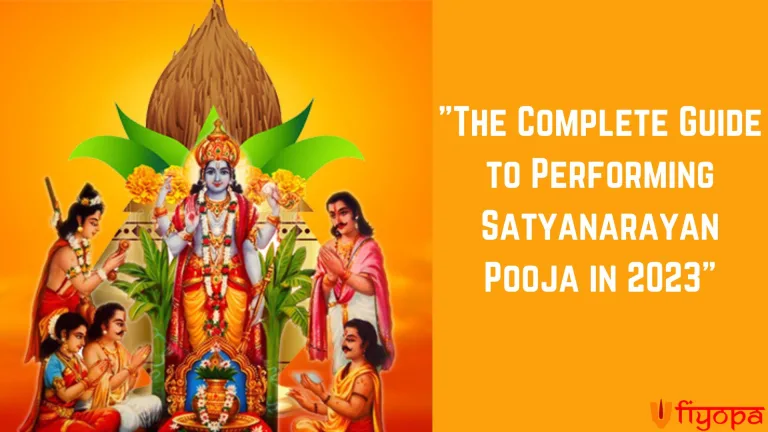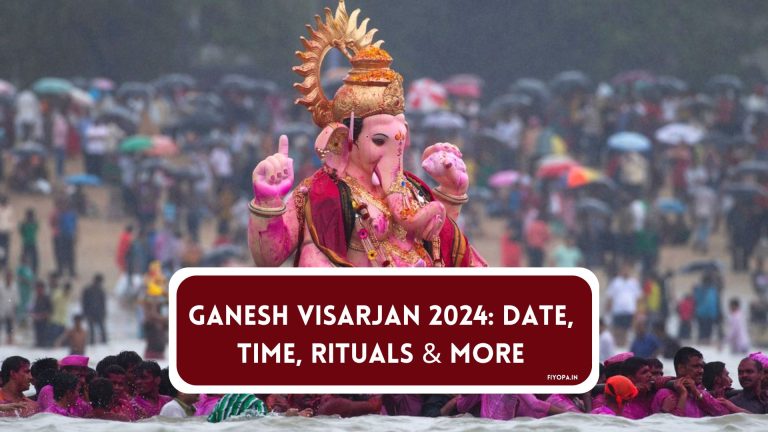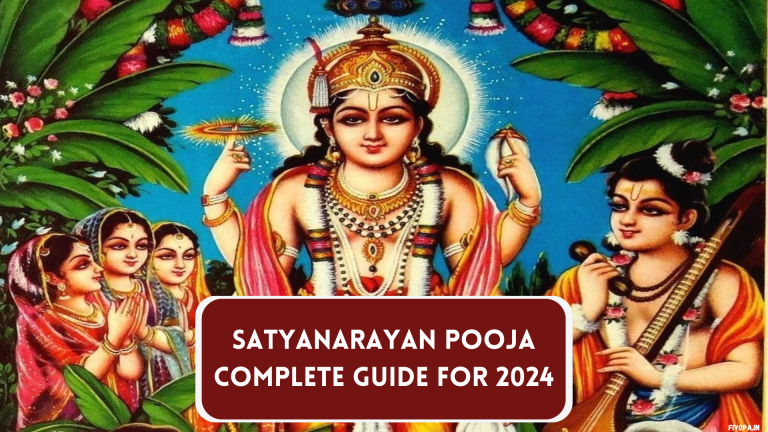Holi 2025: Date, Time, Significance, Celebrations & More

Holi 2025, like the rest of Holis, has particular importance in the Hindu religion’s calendar. It symbolises the triumph of virtue over vice.
Holi is an enchanting festival celebrated in India; it represents the victory of good over evil and the onset of spring. It is a joyous occasion during which people forget grudges and has the reputation of being the ‘festival of colours.’ Holi is celebrated globally by millions of people. Holi plays a truly significant role in Hindu mythology and unites people far and beyond the norm of caste divisions and social hierarchies.
In 2025, Holi is scheduled to be on March 14, which is a Friday, and is preceded by Holika Dahan, which will take place on March 13, which is a Thursday.
In this blog, I will highlight the reasons for celebrating Holi, its history, and rituals involving the festival, as well as how people around the world uniquely celebrate this festival. This blog is perfect for eager readers wanting to learn more about how to immerse themselves in the festivities.
Holi 2025: Quick Information
| Festival Name | Holi |
|---|---|
| Observed By | Hindus and people worldwide |
| Date in 2025 | Friday, March 14 |
| Preceding Event | Holika Dahan (Thursday, March 13, 2025) |
| Significance | Victory of good over evil, harvest festival |
| Major Regions | India, Nepal, and global Indian diaspora |
| Celebrations | Playing with colors, dancing, feasting |
| Mythological Origin | Story of Prahlad and Holika |
Holi 2025: Date and Timings
In 2025, Holi will be celebrated on Friday, March 14, while Holika Dahan, the ritual of lighting a bonfire, will take place on the evening of Thursday, March 13.
Holika Dahan Muhurat 2025
- Start of Purnima Tithi: 10:35 AM on Mar 13, 2025
- End of Purnima Tithi: 12:23 PM on Mar 14, 2025
- Holika Dahan Time: 10:35 PM (13th March) and continue till 1:30 AM
Devotees perform Holika Dahan during the auspicious time, offering prayers and burning effigies of Holika to signify the triumph of good over evil.
Significance of Holi 2025
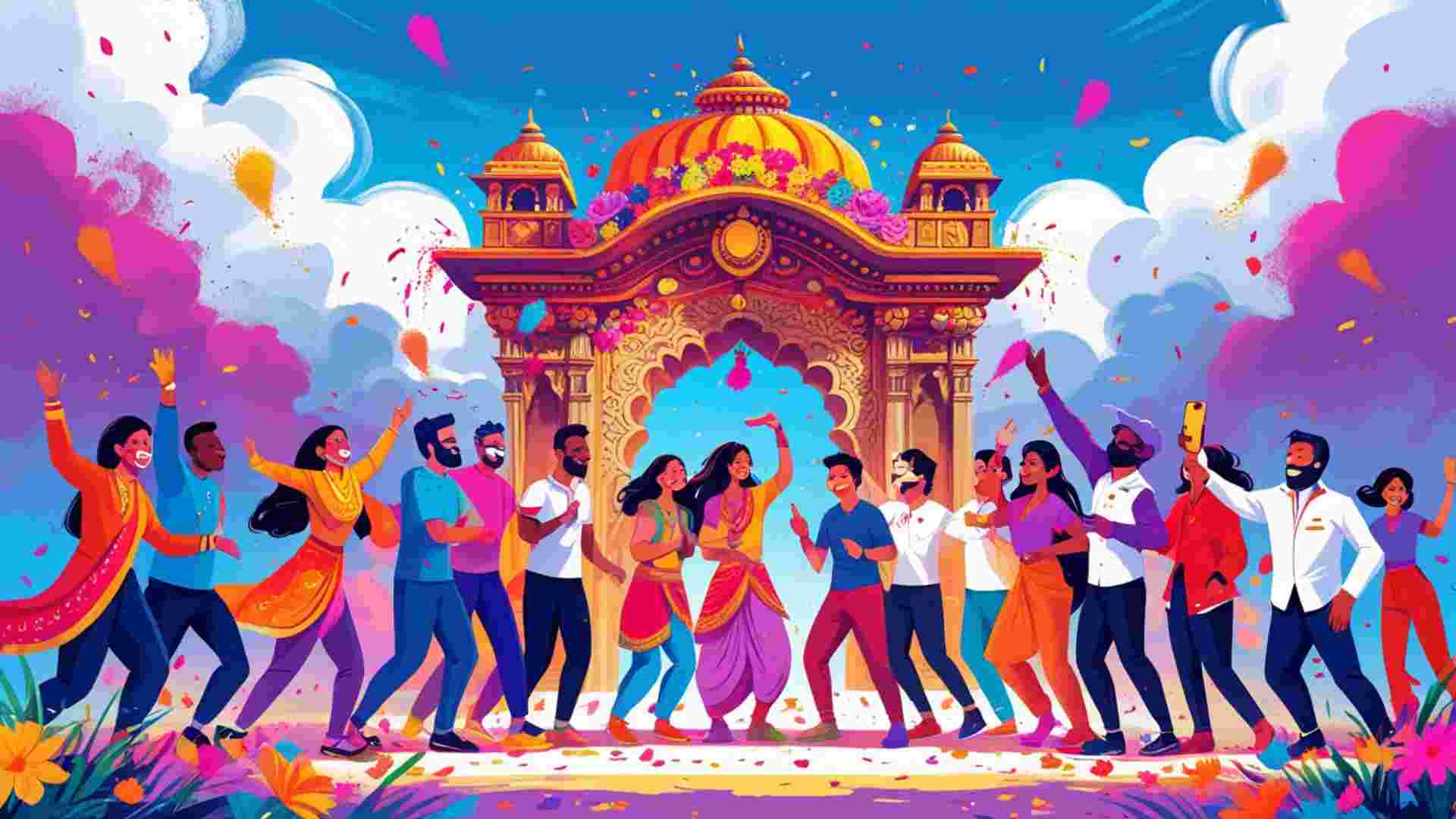
Holi is one of the most pleasant and globally recognised festivals within Hinduism. It is a colourful celebration.
Holi is celebrated based on the story of Bhakt Prahlad and his father, Hiranyakshipu. Hiranyakshipu’s plans for his son were certainly nefarious.
Bhakt Prahlad was persistently devoted to worshipping Lord Vishnu, being the son that his father was not impressed by.
It is written within the holy books of the Hindu religion, ‘Bhakt Prahlad was saved by Lord Vishnu from his father’s nefarious plans.’ It also mentions that Bhakt Prahlad had a sister.
His sister, Holika, played an essential role in her father’s plans to kill Bhakt Prahlad. Holika had received some boons because she defied all logic and was not consumed by fire.
She used this boon to trick Bhakt Prahlad into sitting on a fire while she was straddling him.
To everyone’s awe and amusement, Bhakt Prahlad could not be harmed by fire, and Holika burned to ashes. This incident is also celebrated as the victory of good over evil.
Devotees have different beliefs and therefore bonfires are lit on the eve of Holi, after the Holika idol is worshipped, marking good’s victory over evil.
In addition, devotees celebrate the Holi festival in memory of the divine love of Lord Krishna and Devi Radha.
Bleaches are being used in many Indian Holi celebrations because skin-burning colors are considered harmful and unsightly. However, this sacred festival is often marred by debates over using ‘safe’ colors.
We construct slightly high bonfire-like piles and move around them seven times.
The following day, devotees use water and colours to celebrate Holi. It is also on this day when we refer to it as Dhulandi.
On this day, everything becomes brighter with enthusiasm as we visit other people’s homes to apply Gulaal on each other’s faces.
Devotees put bright colours on each other’s faces, which is known as Gulaal. Other activities are also performed on the occasion of the Holi festival.
Significance of Colors in Holi 2025

Holi is one of the most lively festivals that is celebrated and enjoyed in all parts of India and even in a few other countries.
Holi is very important to the Hindu religion. Most importantly, the Holi festival is a lively display of joy and togetherness.
Holi 2025 will be celebrated in the spirit of togetherness and fanfare that the festival of colour embodies. Every colour of the rainbow has something important to convey.
While red denotes love, green represents optimism and a fresh start, blue illustrates a deeper spiritual association, and yellow stands for hopeful enthusiasm.
People set aside their differences, grudges, and sorrow while celebrating the Holi festival. They focus on building bonds with each other.
2025 Holi is all about spreading the word of acceptance and appreciation for different cultures and life itself. Holi marks the beginning of life filled with colours.
Safety Tips for Enjoying a Colorful Holi 2025
Holi is the festival of colours. Devotees celebrate the vibrant festival of Holi with complete joy and enthusiasm.
It is essential to consider safety tips for skin protection, eye care, allergies, and clothing.
Skin Protection
It is essential to protect the skin while playing Holi. Apply moisturizer or coconut oil on the skin and hair to get protection.
They can act as a protection against harsh colours. They can also be easily removed later on. Clothes get stained while celebrating Holi with friends and family.
Clothes
It is essential to wear old and comfortable clothes that you will be okay with getting stained.
People opt for full-sleeved shirts and pants to keep skin exposure to the minimum.
People should avoid wearing expensive clothes and clothes made of delicate fabrics. Such garments can not recover completely from stains later on.
Eye Care
People can get protection for their eyes during the Holi festival. People can get protection for their eyes by wearing protective goggles or sunglasses.
This can prevent colours from getting in the eyes. In case colour gets into the eyes by accident, wash it with clean water. Consult a doctor in case irritation persists.
Respect Boundaries
It is important to respect personal space and boundaries while playing Holi.
It is better to play Holi with friends and family and get consent before applying colours to them.
Refrain from forcefully using colours on others who have chosen not to give their consent.
Environment
Environment protection is not the responsibility of one individual. It is the responsibility of all.
It is important to opt for eco-friendly colours that are safe for the environment.
These colours are biodegradable. They do not cause harm to plants, animals, and water bodies.
Using colours containing toxic chemicals can pollute the environment. People should avoid using such colours.
Holi 2025 Celebration Around the World
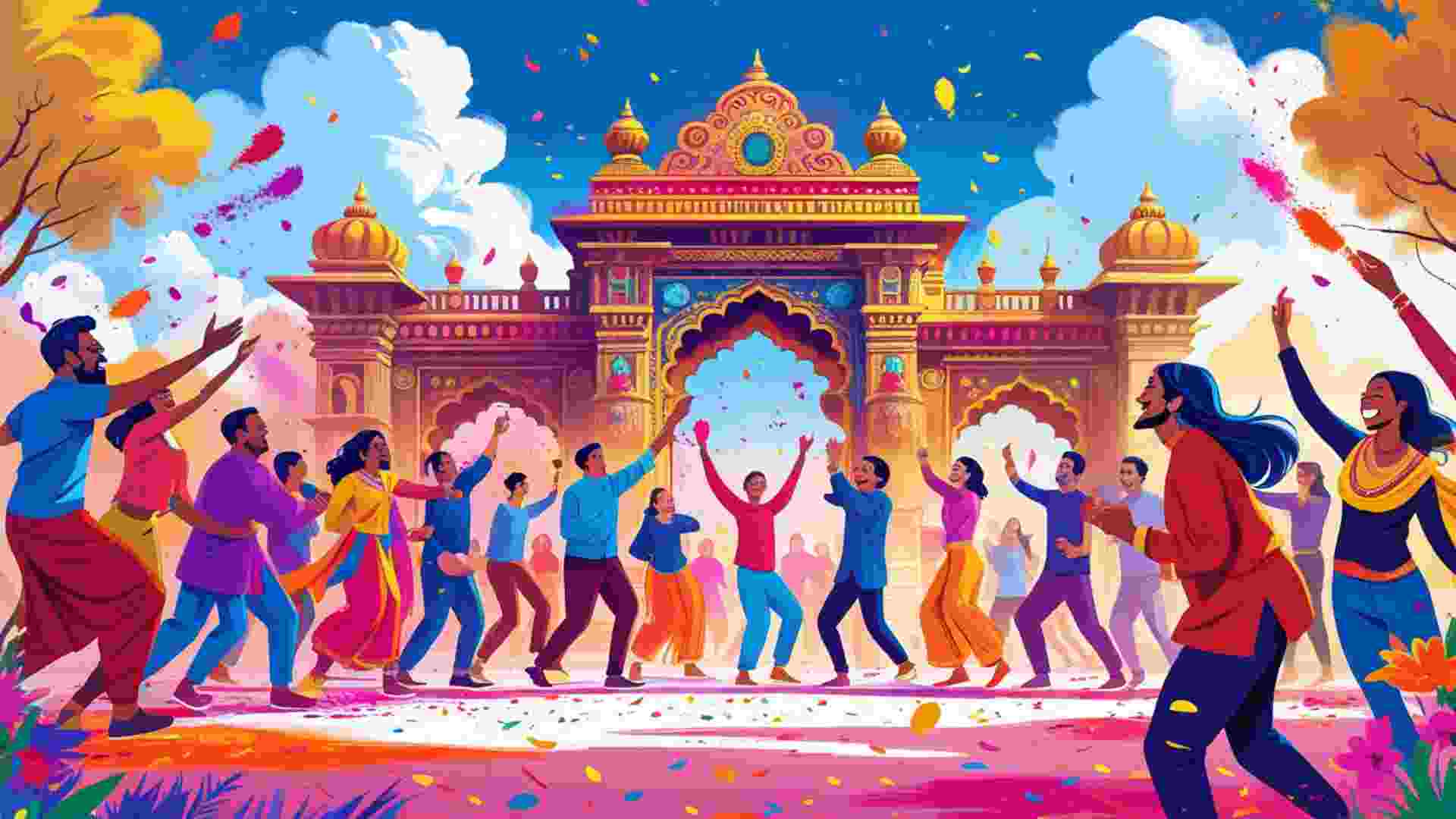
We refer to Holi as the festival of colours. The celebration of Holi goes beyond geography.
Holi is celebrated with great delight and fervour by devotees all over the world. People celebrate it with a variety of traditions and customs.
Indian culture holds the roots of the Holi festival. Nonetheless, it has also become popular in many other nations outside India.
Holi is referred to as ‘Fagu Purnima’ in Nepal, where it is celebrated with similar energy. People participate in parades, music and dance.
Holi is known as ‘Dol Jatra’ for its celebration in Bangladesh. Yet, there is more to the celebration outside of South Asia.
For instance, people from various communities celebrate Holi in Australia, the UK, and the US.
Organisers plan community activities such as cultural festivals, parades, and street gatherings. Holi has become a festival of diversity, unity, and celebration in many nations.
Holi has been widely known to symbolise friendship and renewal in many regions. Yet people from all religions and regions will, without a doubt, enjoy Holi in 2025.
The Significance of Holi
1. Mythological Background
Holi has its roots in the legend of Prahlad and Holika. Prahlad, a devotee of Lord Vishnu, was saved from the fire by divine intervention, while Holika, who intended to harm him, was burnt instead. This story symbolizes the victory of devotion and righteousness over malice and evil.
2. Agricultural Festival
Holi also marks the arrival of spring and the harvest season. Farmers celebrate the festival with gratitude for a bountiful harvest, praying for prosperity in the coming year.
3. Celebration of Unity
Holi transcends religious and cultural boundaries. It promotes harmony, forgiveness, and the breaking down of social barriers, bringing people together in joyous celebrations.
Rituals and Traditions
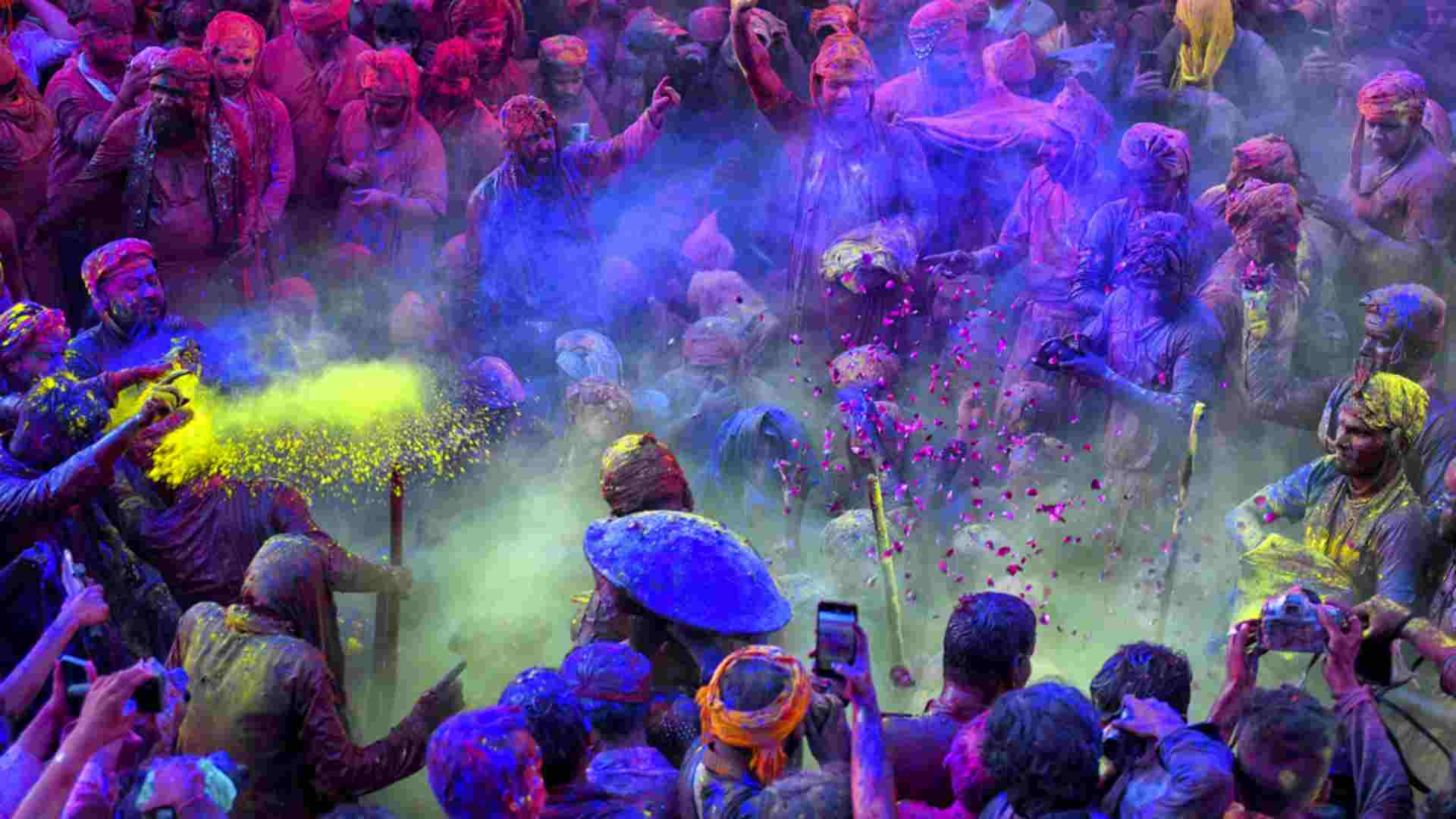
1. Holika Dahan (The Bonfire Ceremony)
On the eve of Holi, people gather around a bonfire to perform the Holika Dahan ritual. They offer grains, sweets, and coconut to the fire, symbolizing the burning of negativity and the start of a new chapter filled with positivity.
2. Playing with Colors
The day of Holi is marked by throwing vibrant colors (gulal) and water at each other. It’s a day of fun and frolic where people forget their differences and immerse themselves in joy.
3. Music and Dance
Holi celebrations often include traditional music and dance performances. Groups sing Holi folk songs and play instruments like dhol and drums, creating a lively atmosphere.
4. Feasting
Food is an integral part of Holi. Popular dishes include:
- Gujiya: A sweet dumpling filled with khoya and dry fruits.
- Thandai: A spiced, chilled milk drink often infused with bhang (an edible preparation of cannabis).
- Puran Poli and Dahi Bhalla: Savory delights enjoyed across different regions.
5. Visiting Friends and Relatives
Exchanging sweets and warm wishes with family and friends is a cherished tradition during Holi. It strengthens bonds and fosters goodwill.
Regional Variations of Holi
1. Lathmar Holi (Barsana, Uttar Pradesh)
In Barsana, women playfully hit men with sticks (lathis) while men try to shield themselves with shields. This unique tradition dates back to Radha and Krishna’s playful interactions.
2. Braj Ki Holi (Mathura and Vrindavan, Uttar Pradesh)
In Mathura and Vrindavan, Holi is celebrated with devotion and grandeur, as these places are associated with Lord Krishna. The temples host elaborate celebrations, including flower Holi and processions.
3. Shantiniketan Basanta Utsav (West Bengal)
Inspired by Rabindranath Tagore, Holi in Shantiniketan is celebrated as Basanta Utsav, marked by cultural performances, dance, and the use of natural colors.
4. Hola Mohalla (Punjab)
In Punjab, Holi is celebrated as Hola Mohalla by the Sikh community. It’s a day of martial arts displays, mock battles, and kirtans.
5. Manjal Kuli (Kerala)
In Kerala, Holi is known as Manjal Kuli, celebrated in temples and communities with turmeric water instead of colors.
Celebrating Holi Safely
While Holi is a time for fun and enjoyment, it is essential to celebrate it responsibly:
- Use Organic Colors: Avoid synthetic colors that may harm the skin and environment.
- Protect Your Skin and Hair: Apply coconut oil or moisturizer to minimize damage.
- Avoid Wastage of Water: Be mindful of water usage while playing Holi.
- Respect Boundaries: Seek consent before applying colors to others.
- Celebrate with Inclusivity: Ensure that everyone, irrespective of their background, feels welcome to join the festivities.
Related Read:- Sankashti Chaturthi 2025: Date, Time, Significance & Celebrations
Conclusion:
Holi in 2025 is set to be more than just a celebration; it will be a moment to bond with family and friends. Holi captures the epitome of life as well as love. This festival transcends societal boundaries. As you get ready to commemorate Holi on 14 March, prepare for the colours and how they can transform one’s heart and soul, as well as the forgiveness and joy that comes with celebrating this festival. While preparing, participating in the rituals, eating the food, and throwing colours, ensure this Holi is one we can look back on fondly.
FAQs:
Holi will be celebrated on Friday, March 14, 2025, with Holika Dahan on the evening of Thursday, March 13, 2025.
Holi is called the Festival of Colors because people celebrate by throwing colorful powders (gulal) and water on each other, symbolising joy and unity.
Holika Dahan signifies the victory of good over evil, based on the story of Prahlad, who was saved by divine intervention, while Holika was burnt in the fire.
In Mathura and Vrindavan, Holi is celebrated with devotion, including flower Holi, temple rituals, and grand processions.
Gujiya, thandai, puran poli, dahi bhalla, and malpua are some of the popular dishes enjoyed during Holi.

